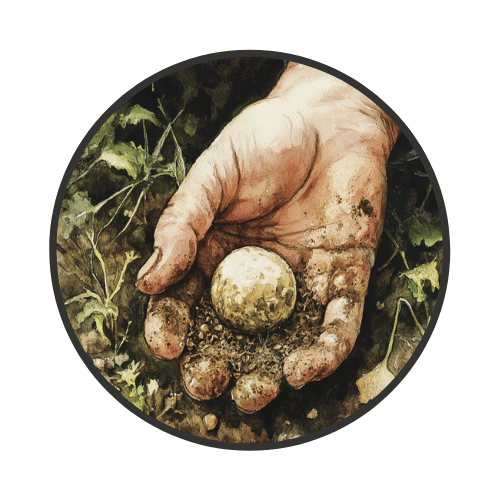What is Seed Bombing?
Seed bombing is a farming technique that involves throwing or dropping marble-sized balls of seeds, clay, earth, or compost to introduce vegetation to land. Seed bombing is a fun, rewarding, and educational activity, and especially fun with children.
If you want to do some seed bombing, first think about what goals you want to accomplish to determine what seeds to buy or gather. It could be flowers for pollinator health and population, recovery of damaged landscapes, or simply a beautification project.
For example, we are at a critical time in the US to support the native solitary bee population. We know that other areas of our planet have lost up to 90+ percent of the native solitary bee population. So, if that were your goal, you should look into many different sizes, shapes, bloom times, and colors, and if available, become aware of the bees starting to show a decline in population in your area.
How to Seed Bomb
Things You Will Need
- Large bowl
- compost
- Water
- Powdered clay or clay from the yard
- Mixing bowl
- flower seeds
How to Make Them
- Mix 1 part seeds with four parts compost and three parts clay powder in your bowl.
- Carefully add small amounts of water. Use your hands until you can shape them into small balls. Keep it loose so it can dissolve easily when placed in a location.
- Place the balls to dry in an excellent, sunny spot. Rotate them every few hours or keep them on a rack so air can quickly dry them out.
- Have a blast by tossing them into the bare parts or areas you had in mind when starting the project. You could have sprouts in a few days, depending on weather, location, and plant time.
-
Take daily seed bomb tours to see what is happening. Take photos so next year you can improve the project.
Some Things to Consider:
- Make this a neighborhood project
- Seed bombs make great springtime gifts
- Using native grasses for land rehab can help a lot of different wildlife
- Watch your bomb sights for bees, butterflies, moths, dragonflies, and other insects
- Get permission before seed bombing private property
- Use this year's flower seeds to plan next year's project, collect what is needed, store, and do this year after year!








Leave a comment
All comments are moderated before being published.
This site is protected by hCaptcha and the hCaptcha Privacy Policy and Terms of Service apply.